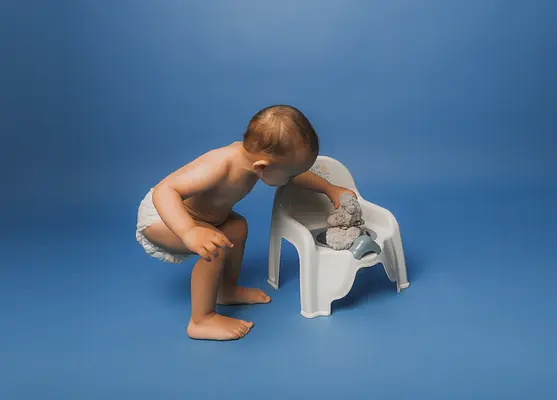Embarking on the journey of potty training is a significant milestone for both the child and the parents. It marks a moment of growing independence, but the path to achieving this can vary widely from one child to another. Understanding the different methods of potty training can help you select the approach that aligns best with your child's personality, readiness, and learning style. Here, we'll delve into various potty training strategies and introduce how integrating the "Potty Whiz" app can complement your chosen method, making the process smoother and more engaging for your child.
1. Child-Oriented Approach
The Child-Oriented Approach to potty training, as proposed by Dr. T. Berry Brazelton, advocates for waiting until the child shows signs of readiness before beginning potty training. This method emphasizes patience and allowing the child to set the pace. It involves identifying signals that your child is ready for potty training, such as staying dry for longer periods, showing interest in the bathroom, or communicating the need to go. With this approach, support and encouragement are key, as is avoiding pressure or rush, allowing the child to gradually adopt the skills at their own pace.
2. Parent-Led Approach
This method involves a structured and scheduled system led by the parent. The Parent-Led Approach can be more regimented, with set times for sitting on the potty throughout the day. This could include after meals, before bedtime, and upon waking up, creating a routine that the child follows. While this method may require more initial effort from the parent to establish the routine, it can be effective for children who thrive with structure and routine.
3. 3-Day Potty Training
The 3-Day Potty Training method is a more intensive approach, where the goal is to ditch diapers entirely over a short span, typically a long weekend. This method requires planning, preparation, and undivided attention during the training period. It involves constant reminders for the child to use the potty and encourages the parent to look for cues that the child needs to go. This approach can be quite effective for motivated children and parents who can dedicate the time and focus needed.
4. Child-Centered Play-Based Learning
This method integrates potty training into play, making the process less stressful and more enjoyable. By incorporating the bathroom routine into playtime, children can grow comfortable with the concept at their own pace. Dolls or toys that mimic potty usage, storybooks about potty training, and other playful elements can support this learning process.
Integrating "Potty Whiz" App into Your Potty Training Method
No matter which method you choose, the "Potty Whiz" app can be a fantastic supplemental tool to support your potty training journey. This versatile app aligns well with any approach by offering features such as:
- Customizable Reminders: Whether you follow a strict schedule or are adjusting based on your child's cues, you can set reminders for regular potty breaks, supporting both structured and child-led methods.
- Progress Tracking: Visual progress tracking helps both parents and children see the achievements and milestones reached along the way, providing encouragement and motivation.
- Rewards System: Positive reinforcement is key in potty training. "Potty Whiz" offers a digital rewards system that can be personalized, making the learning process fun and rewarding for your child.
- Educational Resources: Gain access to a wealth of potty training tips, advice, and problem-solving strategies that are useful for any chosen training method.
Conclusion
Selecting the right potty training method for your child is a personal journey that should align with your child’s unique needs and your family dynamics. Blending traditional methods with modern technological assistance like "Potty Whiz" can bring a refreshing and effective approach to tackling this developmental milestone. By staying supportive, consistent, and patient, you'll find a strategy that works for your child, making the transition out of diapers a success.






